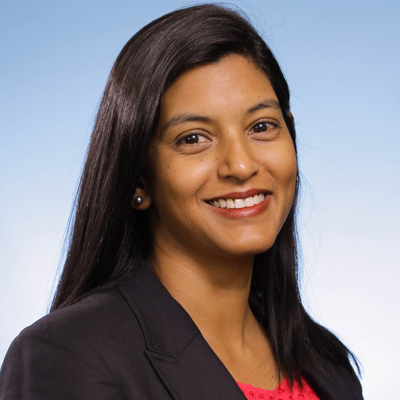Applying practical research to patient care
Diagnostic errors account for about 40% of medical malpractice errors with many of the errors being attributed to communication failures. Perhaps most shocking about these statistics are that they are fixable problems. As a provider, Dr. Urmimala Sarkar, of the University of California, San Francisco, was personally affected by not receiving a patient’s important test results. That experience motivated her to devote much of her career towards researching ways to improve quality of care. By balancing the roles of primary care physician and research scientist Dr. Sarkar is able to serve her patients with compassionate and effective care. Her research interests concentrate on identifying and addressing high risk health states before harm occurs, evaluating health information technology to see if it is usable and useful for low-income, chronically ill populations, and testing which positive health messages are “contagious” and propagate on online social media. Dr. Sarkar hopes that through her practice and research she can improve the safety and quality of care for each of her patients, especially those that are disenfranchised.
There are very few researchers focused on patient safety mistakes in doctor’s offices rather than in hospitals. Therefore, Dr. Sarkar’s research offers an important addition to the literature. Furthermore, she is the only researcher in the country with a specific focus on vulnerable patient populations. Because her work aims to change the way people in healthcare work to ensure that everyone gets the safest possible care when they go to the doctor, it is a very multidisciplinary endeavor. Combining the expertise of epidemiologists, anthropologists, health services researchers, computer programmers, sociologists, human factors engineers, and organizational scientists, Dr. Sarkar expects to make real-world, practical safety solutions a reality in the next one to two years. Thus, as her research is scaled to larger health systems, quality of primary healthcare will improve across the nation.
Current research includes:
-
Communication: Dr. Sarkar is interested in improving the communication between patients and physicians. Much of her work involves using technology in order to improve communication. For instance, messaging patients to track their blood pressure, or making health portals more user friendly for at-risk populations.
-
Tracking High Risk Conditions: Providers are responsible for tracking important measures. For example, if a patient has received a cancer screening like a mammogram. Dr. Sarkar is trying to take the responsibility off of the providers and make technologies take on the role of tracking for increased reliability. This will improve the tracking of high-risk conditions especially.
-
Spreading Innovation: Dr. Sarkar works to spread innovation among all the public hospitals in California. With the strong belief that in order to improve health equity, providers must bring up community hospitals that care for people in public delivery, Dr. Sarkar brings web-based dissemination platforms to hospitals and then measures their quality.
- Social Media: Dr. Sarkar’s work with social media aims to see how people are influenced by social media and how that influence can help to change health behaviors. Using social media, she hopes to craft messages for patients that can help improve health outcomes.
Bio
Dr. Sarkar’s research is very closely tied to her practice of primary care for low-income, uninsured patients at San Francisco General. She was initially inspired to study patient safety after one of her patients had a delay in care because she never received an important result -- an abnormal chest x-ray -- that another doctor had ordered. Though the patient didn’t suffer lasting harm, it was a close call that she never forgot. Since then, Dr. Sarkar has been working on how to prevent medical mistakes.
Many people believe information technology is going to be the savior of our broken healthcare system. Dr. Sarkar started working in health information technology because she saw that no one in the field was taking into the account the needs of her marginalized patients, many of whom cannot read or do not speak English. These are the patients who most need support and help to manage their health, but too often technology is aimed at individuals that are highly educated and motivated consumers. Therefore, in both her patient safety and health information technology work, Dr. Sarkar’s belief that her “work is to advance the health of low-income, vulnerable populations” continues to motivate her towards rigorous science with applications that improve health.
Aside from research, in her free time, Dr. Sarkar enjoys spending time with her husband and two young children either hiking, biking, or spending time outdoors. She also says she, “loves everything that has to do with Brazil.” After living there, she speaks both Spanish and Portuguese which she uses within her practice.


